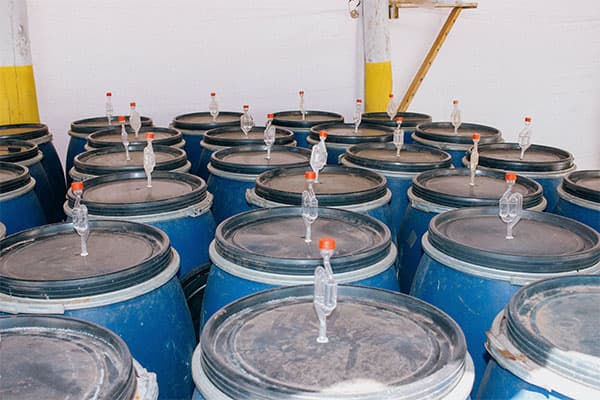This post is a part repost on Anaerobic Coffees from Falcon specialty‘s post on Roasting Anaerobically processed coffees. We we permitted to repost, we have done some monior editing.
Introduction
Love them or hate them, anaerobic coffees are now a mainstay of specialty offer lists, thanks to innovations in processing from producers in Latam origins over the past five years or so.
Super-processed coffees have become a little controversial amongst purists due to the extravagant cup scores that heavy processing can achieve. They’ve raised an interesting debate over what we talk about when we talk about quality. Is the true quality work done at the level of agronomy, where quality gets locked in at the enzymatic level of the coffee? If quality is enhanced in processing, elevating cup score and price premiums, is this a good or bad thing overall? It’s beyond the scope of this article to answer those questions, but whether you like anaerobics and their kin or not, one thing for sure is that they have their champions, their audience is growing and they’re here to stay.
What we will try to tackle here is how to approach anaerobics in the roast, or suggest why you might treat anaerobics differently than any other coffee. First, let’s hit the basics.
What are Anaerobics?
Anaerobic processed coffee is a relatively new method in the specialty coffee industry that has gained attention for its unique flavour profiles. The process involves fermenting green coffee in a controlled environment devoid of oxygen, which leads to distinct and often more complex flavour characteristics compared to traditional processing methods.
After harvesting, coffee cherries are placed in sealed tanks where oxygen is limited or excluded. This anaerobic environment is conducive to the growth of specific microorganisms that are not typically active in aerobic (with oxygen) conditions.

The fermentation process can be carefully controlled in terms of temperature and duration, allowing for precise manipulation of flavour outcomes. After anaerobic fermentation, the cherries undergo drying and milling similar to other processing methods. This process can create unique and enhanced complexity in flavour profiles. Coffees often exhibit more complex and layered flavours. Common notes include tropical fruits, wine-like acidity, and a pronounced sweetness. The controlled environment allows for more consistency in the final product, as variables like oxygen exposure are minimised.
The specific microorganisms that thrive in anaerobic conditions, such as certain strains of yeast and bacteria, play a crucial role in developing unique flavours. These microbes can produce different metabolites that contribute to the coffee’s distinct taste. Anaerobic fermentation can alter the chemical composition of the coffee, affecting factors like acidity, sugar content, and aromatic compounds. These changes are responsible for the enhanced flavour profiles.
It’s worth noting that just as with other processing methods, the finer details will be up to how one producer will interpret them next to another based on their own vision for the coffee and their unique style.
Roasting Anaerobic Coffees
Now that we know what we’re dealing with, let’s take a look at the approach to roasting anaerboic coffees.
Here’s a rundown of some key considerations.
- Start with a gentle ramp-up in temperature to avoid shocking the beans, which can lead to uneven roasting
- Pay close attention to the development phase (post-first crack). Anaerobic processed beans often require a longer development time to fully develop.
- Consider ending the roast at a slightly lower temperature than you might for traditionally processed beans to preserve the nuanced flavours.
- Don’t leave everything to the software! Use visual and olfactory cues to colour and aroma to monitor the roast’s progress. Anaerobics may exhibit different colour changes and aromas during roasting compared to other coffees.
- As always, conduct small batch tests to determine the optimal roast profile. This may also involve tweaking your other variables such as airflow, drum speed, and heat application.
- Keep it light and gentle! Over-roasting can mask the unique flavours developed during anaerobic fermentation. Aim for a roast level that highlights the coffee’s natural characteristics based on what you now know about how anaerobics get processed.
- Get that heat out quickly so no development continues in your cooling tray. Rapid cooling post-roast helps in preserving the delicate flavours and aromas.
- Be prepared to experiment with different profiles to find what best suits your unique coffee. Every coffee will behave differently and each batch can vary. Slight adjustments can make a significant difference.
- The old adage rings true. Cup, cup and cup again. Take lots of notes, and implement rigorous quality control measures throughout the roasting process to ensure consistency.
We would like to thank Falcon for letting us replubish.



